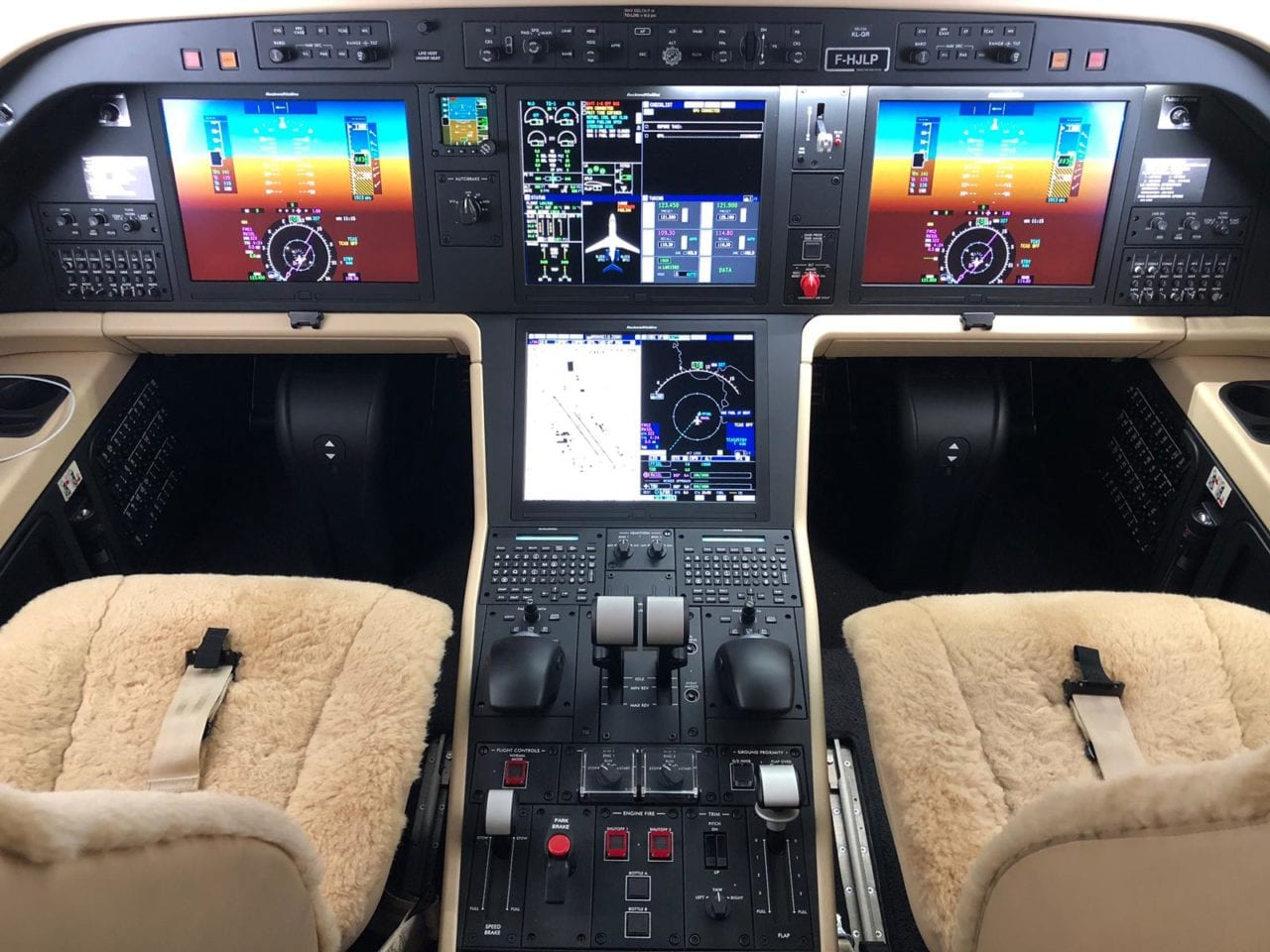
The cockpit of an Embraer Praetor 600, owned by Malta-based Luxwing Ltd., features the Collins Aerospace Pro Line Fusion avionics system. Photo: Luxwing Ltd.
Embraer is focusing on avionics enhancements, such as predictive wind shear and combined head-up display/ enhanced vision systems, to improve aircraft safety, a company official said on Feb. 19.
“When you think about how Embraer looks at avionics, it’s really about trying to create the safety environment for the future,” Michael Amalfitano, the president and CEO of Embraer Executive Jets, told Avionics International in an interview after participating in a General Aviation Manufacturers Association (GAMA) round table with other aviation officials in Washington, D.C. to discuss the new GAMA State of the Industry 2020 report.
The latter suggests that the business jet market is on an upswing. Last year saw the delivery of 809 business jets – the highest annual tally since 2009 and an increase from the 703 business jets delivered in 2018.
Amalfitano said that Embraer’s business jet avionics efforts are aimed at reducing “the workload and the fatigue for the aircraft and the pilots.”
“We’re trying to be consistent so that the DNA of the aircraft, whether you’re in a Praetor 600 or 500, or even in a Phenom 300 or 100, the [flight] decks are going to be very similar in terms of their characteristics,” he said.
Regardless of which avionics provider Embraer chooses, Garmin or Collins Aerospace, for example, “the content of the aircraft has to have a similar DNA,” Amalfitano said.
Embraer has moved to bring fly-by-wire to its Phenom business jets and has showcased the predictive wind shear and future state avionics of the company’s Praetor fleet.
Asked when Embraer would have an all fly-by-wire business jet fleet, Amalfitano said that “we are actively in discussions with providers, and we are actively working with our engineers to develop that technology, and it is near term so you’re going to see things happen very quickly.”
The Praetor 600 entered service last June and has demonstrated “industry leading short runway operations capability,” including landing at the 2,952-foot airfield in Jacarepagua, Brazil, according to Embraer.
The Praetor 500 and 600 mid and super-mid-size business jets feature Collins Aerospace’s Pro Line Fusion avionics, and Ka-band connectivity from ViaSat.
In terms of in-flight entertainment (IFE) and cabin management systems (CMS), “we’re constantly looking for ways to bring that in-house,” Amalfitano said. “It improves quality. You have much less NC (non-conformity).”
“We’re looking for ways to bring some of those technologies in-house,” he said. “That’s number one. Number two is everything being integrated. The key about technology is it has to be timeless. You can’t have it be seen. How do you create an integrated system in the aircraft that is more virtual so that you can constantly keep it up to date with the technologies that are needed, not only for safe flight but for the user interface? Our user interface is critical. It’s all about the customer experience. How do they work with Internet [on-board]? Well, we have to have smaller and smaller antennas because that allows you to bring it [the Internet] onto smaller and smaller aircraft. When you have Satcom Direct or Viasat, as an example, create a new antenna technology for Ku-or Ka-band, that’s great for a big airplane, but how do you get it small enough and light enough to get on the small aircraft?”